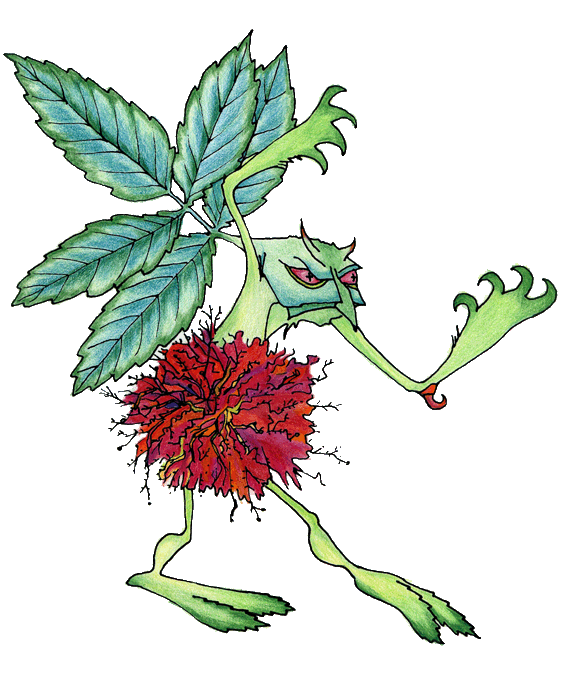 Nederlands
Nederlands

| What are plant galls? Hosts Humans and Galls | ||
What are plant galls? It is important to know whether the growth occurs in the absence of the thought gall agent, as a gall should be induced by the gall agent. This rules out abnormal growths due to mechanical damage, or unusual environmental properties such as light, temperature, nutritional deficiencies and toxic chemicals. The gall agent usually is closely associated with the gall and the host. It often makes part of an important part of the agent's life cycle.There is great difference of opinion whether the enlargement and/or proliferation of the plant cells is necessary if the growth change is to be called a gall. By some, reduction in mature size is an acceptable requirement. In some cases the host tissue develops with an internal structure differing from that which would normally have occurred, but often similar to that of other parts of the plant. In some cases the gall is colored differently from the unaffected parts of the plant. In all cases, the gall is supposed to provides shelter and food or nutrients for the gall agent. The gall growth is initiated and regulated by the gall agent. The requirement for regulation may exclude the leaf-rolls ofBlennocampa phyllocolpa on rose, which may be due solely to a chemical agent introduced at the time of insertion of the ovipositor. Such effects are referred to as 'procecidial'. The gall location, size and shape is very specific for that gall causer on that host. But there is no rule for all agents. Diversity is nearly to great to grasp and so is their behavior. In some cases the same species produce different gall types in different locations on the same or different hosts. Galls may be found on algae, fungi, lichens, mosses, liverworts, ferns, conifers, bryozoans and coelenterates. When you come across keys to gall causers you will generally find that they are arranged according to the host genus. (sources: British Plant Gall Society website, MEYER 1987, DOCTERS VAN LEEUWEN) Hosts These can be algae, fungi, lichen, mosses, liverwort, ferns, conifers, trees, shrubs and herbs. Most of them are found on trees, shrubs and herbs. Galls can be found on every part of a plant, but they are most commonly found growing on leaves. Humans and Galls |
Figure 1: This mining fly on a holly leaf is not inducing a gall. From: Redfern, M., Askew, R.R., Plant Galls, Naturalists’ Handbooks 17, 1992
|